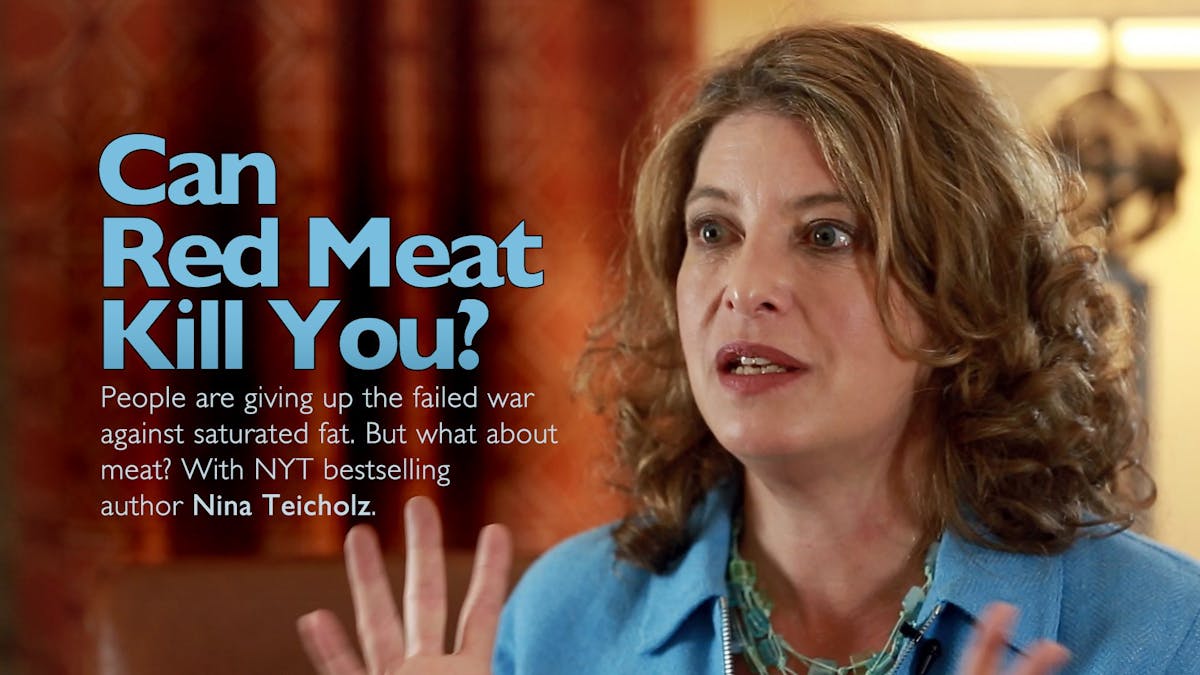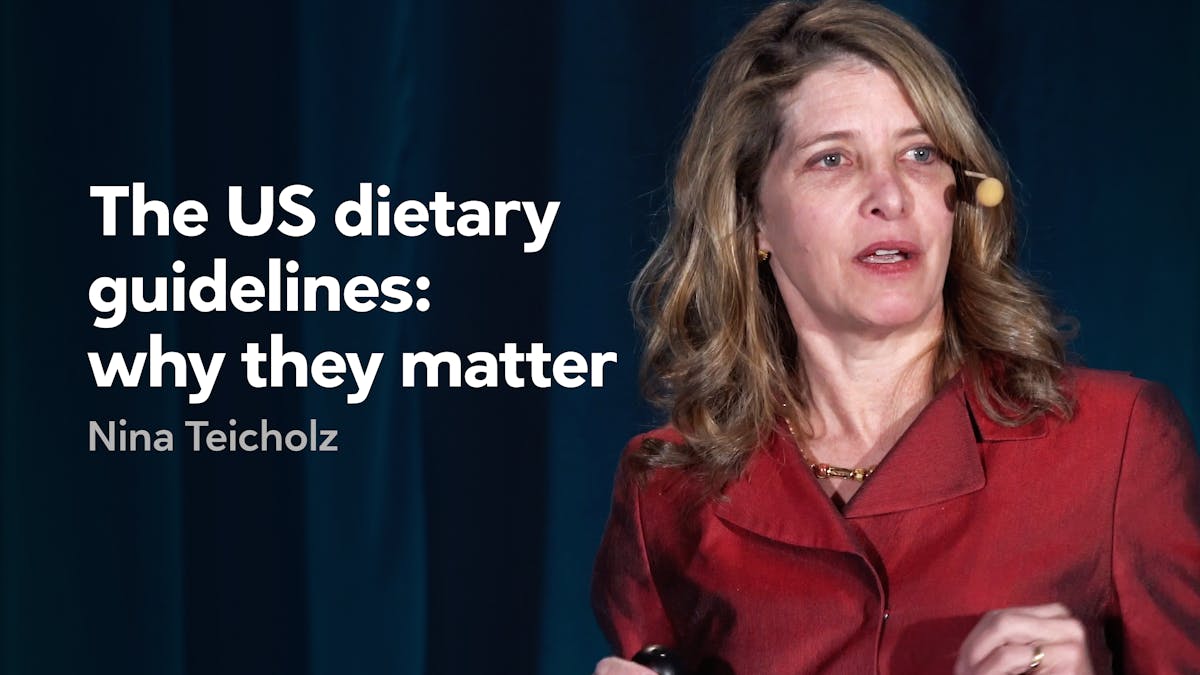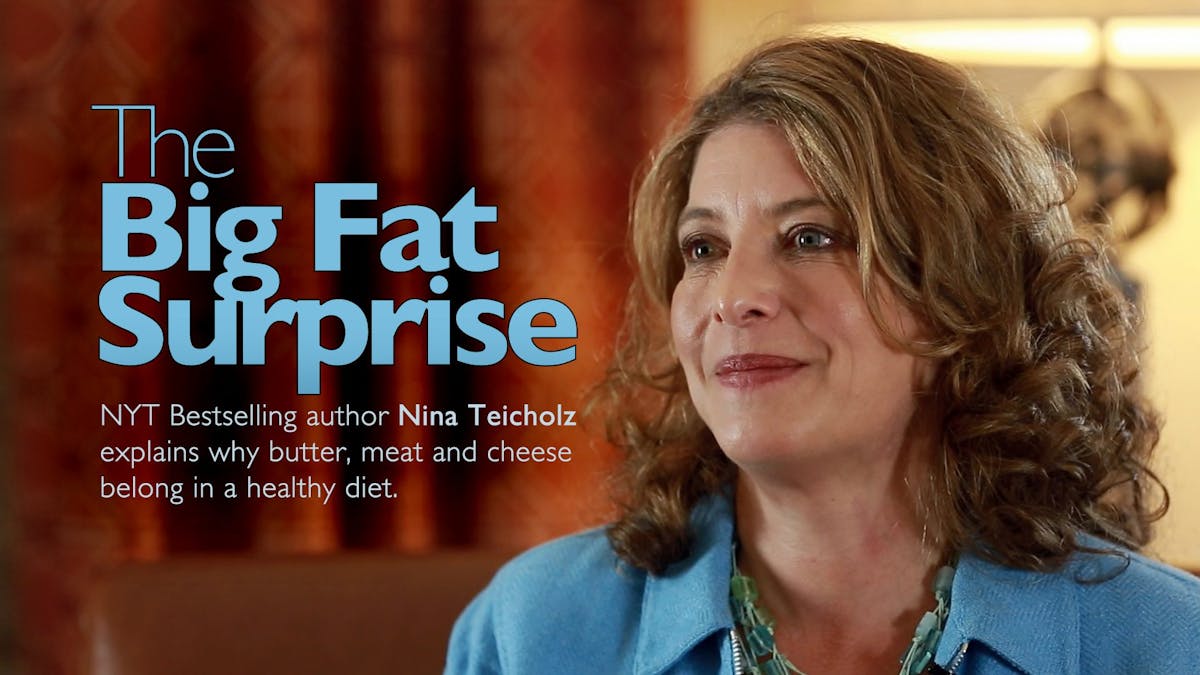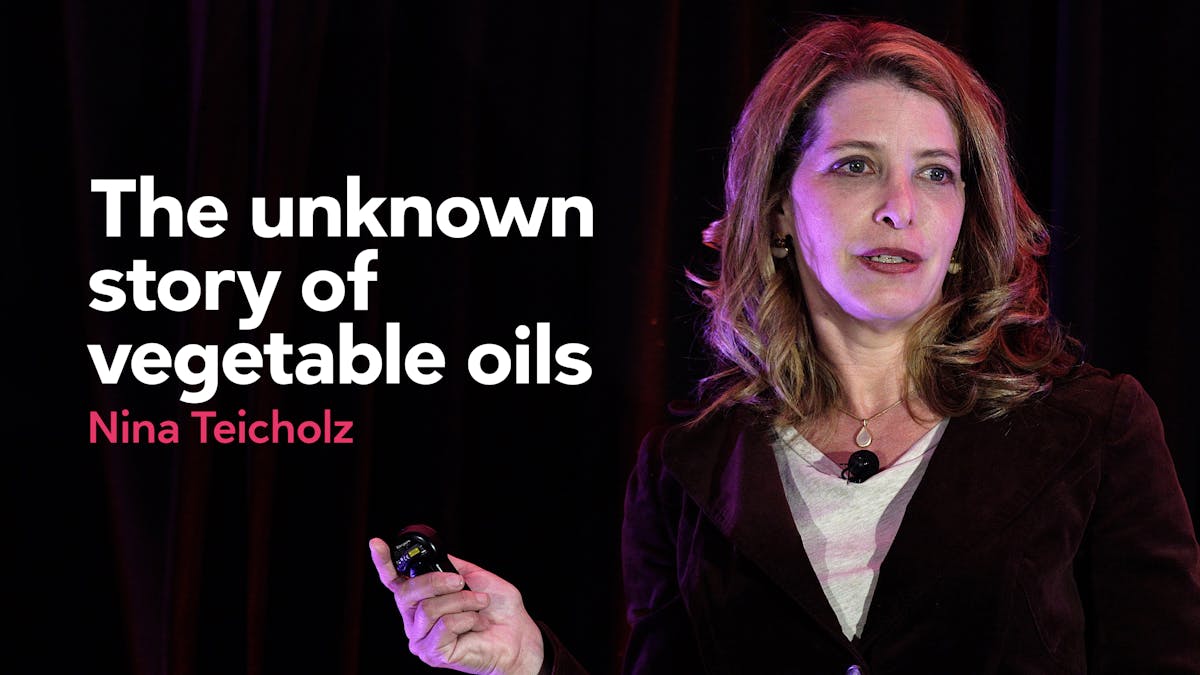The rivalry between Atkins and Ornish: Low carb vs. high carb
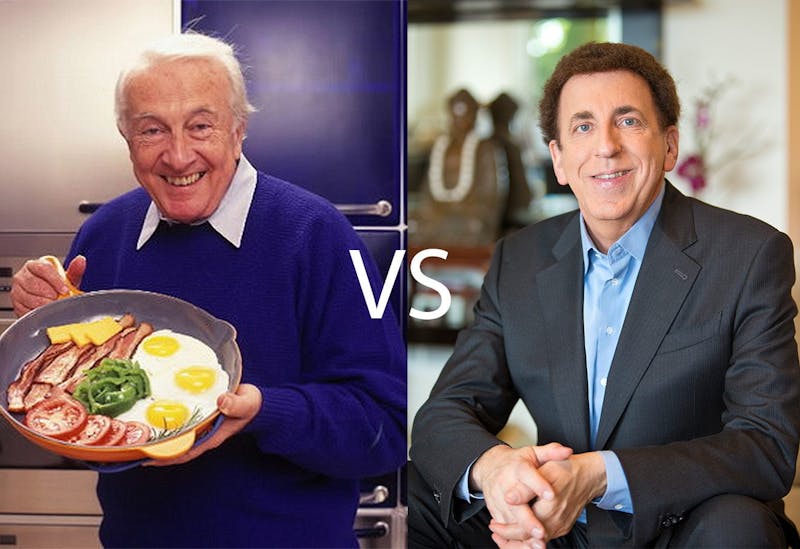
Here’s another free chapter from Nina Teicholz’s spectacular and New York Times best-selling book The Big Fat Surprise.
In this chapter from the book, we’ll learn about the rivalry between Atkins and Ornish – two people whose findings were on two opposite ends of the spectrum.
At a time when America – and Dr. Ornish – believed that saturated fat was a killer, Atkins’ low-carb, high-fat diet sounded “ludicrously unhealthy”. And yet it seemed to work…
From The Big Fat Surprise:
The Rivalry Between Atkins and Ornish
In recent decades, the most famous — one might say infamous — voice in the wilderness promoting the opposite point of view was, of course, Robert C. Atkins, a cardiologist in New York City. In 1972, Dr. Atkins’ Diet Revolution was published and became an overnight best-seller, reprinted twenty-eight times with more than ten million copies sold worldwide. Mainstream nutrition experts consistently disparaged Atkins and his high-fat recommendations, calling him a “fad” diet doctor and accusing him of malpractice, if not worse, but his approach took hold for the simple reason that the “Atkins diet” seemed to work.
Based on his experience treating patients, Atkins believed that meat, eggs, cream, and cheese, exiled to the narrow tip of the food pyramid, were the healthiest of foods. His signature diet plan was more or less the USDA pyramid turned on its head, high in fat and low in carbohydrates. Atkins believed that this diet would not only help people to lose weight but also fight heart disease, diabetes, and possibly other chronic diseases as well.
The Atkins diet has changed somewhat over the years, but its “induction” phase has always been strict, allowing only 5 to 20 grams of carbohydrates daily, or about half a slice of bread at most, although Atkins permitted carbohydrates to tick upward after a patient had stabilized at his or her desired weight. The rest of the diet was protein and fat, with at least twice as much fat as protein. This prescription meant that Atkins’s patients ate mainly animal foods — meat, cheese, eggs — for the simple reason that these are the only food sources (other than nuts and seeds) where protein and fat are bound together naturally in this proportion.
Atkins started down this path as a young cardiologist struggling with his own expanding girth. He went to a medical library and found a low-carbohydrate diet experiment written up in 1963 by two doctors from the University of Wisconsin Medical School. The diet was a tremendous success for him and then for his patients. Atkins tweaked the Wisconsin paper and expanded it into an article for Vogue magazine (his regime was called the “Vogue Diet” for a while). He then published it in a book.
As the low-carbohydrate, high-fat diet became popular, New Yorkers flocked to his Midtown office, and Atkins soon wrote other best-selling books based on his ideas of healthy nutrition. In 1989, he also launched a successful company that sold low-carbohydrate dietary supplements, including Atkins Bars, low-carb pasta, and low-carb, high-fat diet drinks, with millions of dollars in sales annually. Yet even after achieving both fame and fortune, Atkins, to his consternation, could never gain respect from his colleagues or the academic researchers influencing public health policy.
The main reason was that by the time that Atkins arrived on the scene, the diet-heart hypothesis had been firmly fixed at the center of mainstream consciousness for a decade, and Atkins’s ideas butted up against this dominant low-fat view. His high-fat, low-carbohydrate diet sounded ludicrously unhealthy to the researchers and clinicians who already believed that saturated fat and fat overall were killers. At the McGovern committee hearings in 1977, the famous Harvard nutrition professor Fredrick J. Stare called Atkins an “instant money” diet doctor hawking an extremist “fad” regime. The diet was “dangerous,” and “the author who makes the suggestion [is] guilty of malpractice,” said Stare. The American Dietetic Association referred to Atkins’s regime as “a nutritionist’s nightmare.”Atkins also confronted America’s growing enthusiasm for the polar opposite of his high-fat regime: the very-low-fat, near-vegetarian diet, whose most prominent advocate was the other famous diet doctor of the late twentieth century, Dean Ornish. The two doctors had much in common: they both made millions from their best-selling books; Atkins graced the cover of Time while Ornish, Newsweek. Atkins had a thriving private practice in Midtown Manhattan and a weekend home in fashionable South Hampton, while Ornish had — and still has — offices in the wealthy waterfront town of Sausalito, across the Golden Gate Bridge from San Francisco. How could they have both been so successful while offering such diametrically opposed solutions for a healthy, disease-free life?
The reality in America from the 1970s onward was that the nation’s health was already worsening from the failure of the low-fat diet to prevent heart disease or obesity, and people were scrambling to find an alternative, in one direction or another. Atkins and Ornish shared the view that the AHA diet had been unwise; Atkins coined the term “diabesity” to describe the rising twin scourges of diabetes and obesity in the late twentieth century. These worsening disease rates opened up an opportunity for alternative ideas about healthy nutrition, and both Ornish and Atkins seized that chance. Their solutions just could not have been more different. Like Jack Sprat and his wife, one called for more fat; the other called for less.
In 2000, the two rival diet doctors met in Washington, DC, for a televised debate in a CNN special, “Who Wants to Be a Millionaire Diet Doctor?” On one side, there was Atkins, with his three-egg omelets and two strips of bacon for breakfast. On the other side was Ornish with his fruits and vegetables and his well-honed criticisms of Atkins: “I’d love to tell people that eating pork rinds and bacon and sausage is a healthy way to lose weight, but it isn’t,” he said, and, “You could go on chemotherapy and lose weight, but I don’t recommend it as the optimal way.”
Ornish also accused Atkins’s diet of causing impotence and bad breath. Ornish’s cleverly polished zingers went straight to the heart and made Atkins apoplectic. “I have treated fifty thousand patients with a high-protein diet,” he sputtered, “and all they tell me is that their sex life is better than it ever was.”
A crucial problem for Atkins, however, was that he had never performed research to support his dietary claims. While Ornish managed to leverage his one small trial into several publications in the Journal of the American Medical Association, as discussed in Chapter 6, the Atkins diet had only been subject to a few small trials, with discouraging results. To defend his regime he had little more than anecdotal evidence: his medical files with tens of thousands of putative success stories. “I would never do a study because I’m a practicing physician. I mean, all I do is treat people,” he once told Larry King. Atkins practically begged experts to come in and look at his records, but no one responded to his pleas until he was close to retirement.
It didn’t help, either, that in a world where personal politics often seemed capable of steering the entire scientific ship, Atkins clearly lacked the necessary “people skills” to convey his ideas. Whereas Ornish was a smooth cultivator of power, Atkins wore an antagonizing crust, and this curmudgeonly, thin-skinned persona worked against him. “He would be interviewed and would say the American Medical Association is evil, or dieticians are stupid!” said Abby Bloch, a nutrition researcher at Memorial Sloan Kettering Hospital and former director of research at the Robert C. and Veronica Atkins Research Foundation. “And of course he’d alienate the entire audience. So he was a lightning rod.” His habit of speaking in hyperbole also irritated his scientific colleagues, according to Bloch. “He’d say, ‘I’ve seen sixty thousand patients, and I’ve never had a problem.’ For doctors, it was like fingernails on a blackboard. And he would say, ‘I can cure diabetes!’ And doctors, you could see their blood pressure go up.”
Perhaps if Atkins had been more patient and politically astute, he might have made inroads, Bloch suggested. Yet even the more judicious and well-respected Pete Ahrens failed to budge his colleagues in the nutrition mainstream. The conventional dietary wisdom was just too entrenched. Ultimately, despite Atkins’s wealth of practical knowledge in helping people lose weight and possibly avoid heart disease, he would not get a serious hearing from academic researchers until the twenty-first century.
In April 2003, at the age of seventy-two, Atkins slipped on the ice outside his Manhattan office, hit his head on the pavement, and fell into a coma. He died a week later. Rumors quickly spread about the cause of death; it was said to be a “heart attack,” and he was reported to be obese — although he was not.* (*Atkins’s death generated controversy much as he had in life. Critics of Atkins publicized a leak from the New York City Medical Examiner’s Office, revealing that Atkins suffered from heart disease, but it was not clear whether this condition was due to nutrition or an infection contracted on a trip to the Far East years earlier, as Atkins’s cardiologist claimed.Critics also highlighted the fact that Atkins’s death certificate listed his weight as 258 pounds, which implied that he was obese; however, at time of admission to the hospital, his weight was recorded as 195 pounds, and his widow plausibly explained that the rapid weight gain had occurred due to fluid retention during his coma (Anon., “Death of a Diet Doctor,” 2004).) When Atkins’s dietary supplement business declared bankruptcy two years later, apparently done in by both poor management and a agging interest in the low-carb diet following his death, the experts who had loathed his views portrayed these events as proof of his diet’s final death blow. The bankruptcy, especially, was treated as confirmation that the low-fat diet had finally trumped low-carb. As Tufts University professor Alice Lichtenstein told me in 2007, “It’s over. Atkins just declared bankruptcy. People are already past the low-carbohydrate phase now.”
But this was wishful thinking, because while Atkins’s fame was such that his name became synonymous with the low-carb diet, his death did not ultimately quash its popularity. The diet’s success in helping people to lose weight kept it alive, albeit in a subterranean way. The diet has a surprisingly long history, in fact. The belief that carbohydrates are fattening and high-fat diets healthy predated Atkins and would soon find other, far more mainstream promoters. “Atkins” is merely the name that Americans now most readily associate with this diet, but there were others who developed and nourished this idea long before him, and there would be others after him, as well.More
Keep reading by ordering the book on Amazon
Top Nina Teicholz videos
- MEMBERS ONLY
![The myth of vegetable oils]()

- MEMBERS ONLY
![Why our dietary guidelines are wrong]()
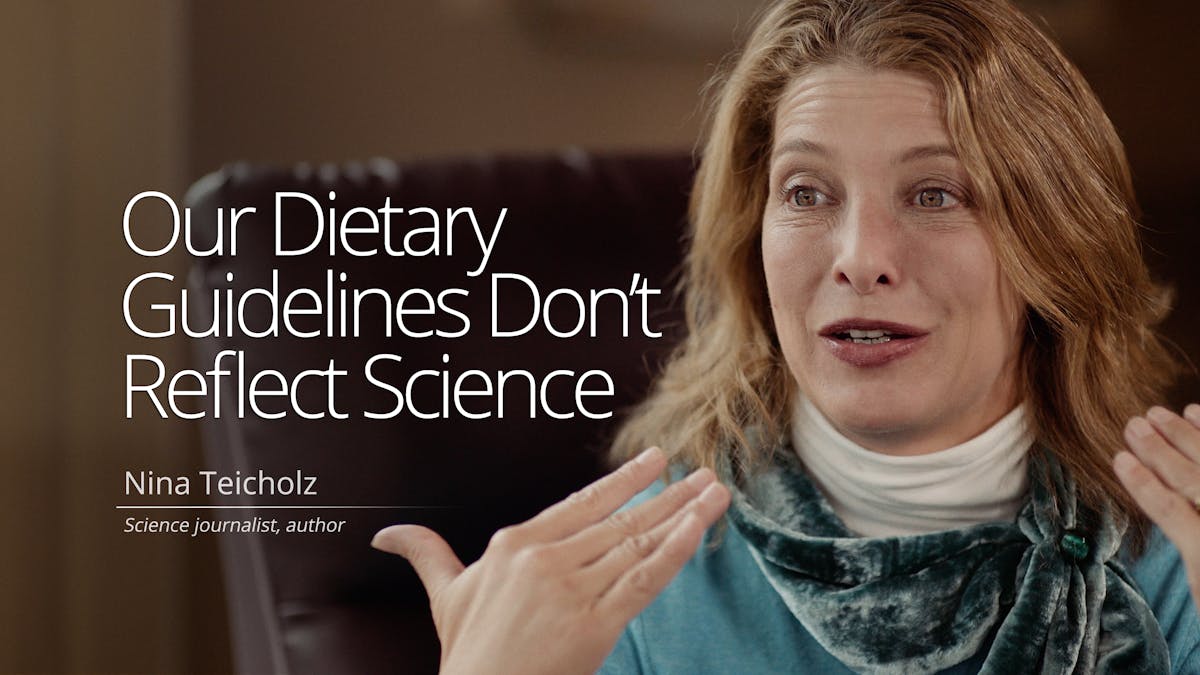
- MEMBERS ONLY
![Can red meat kill you?]()
